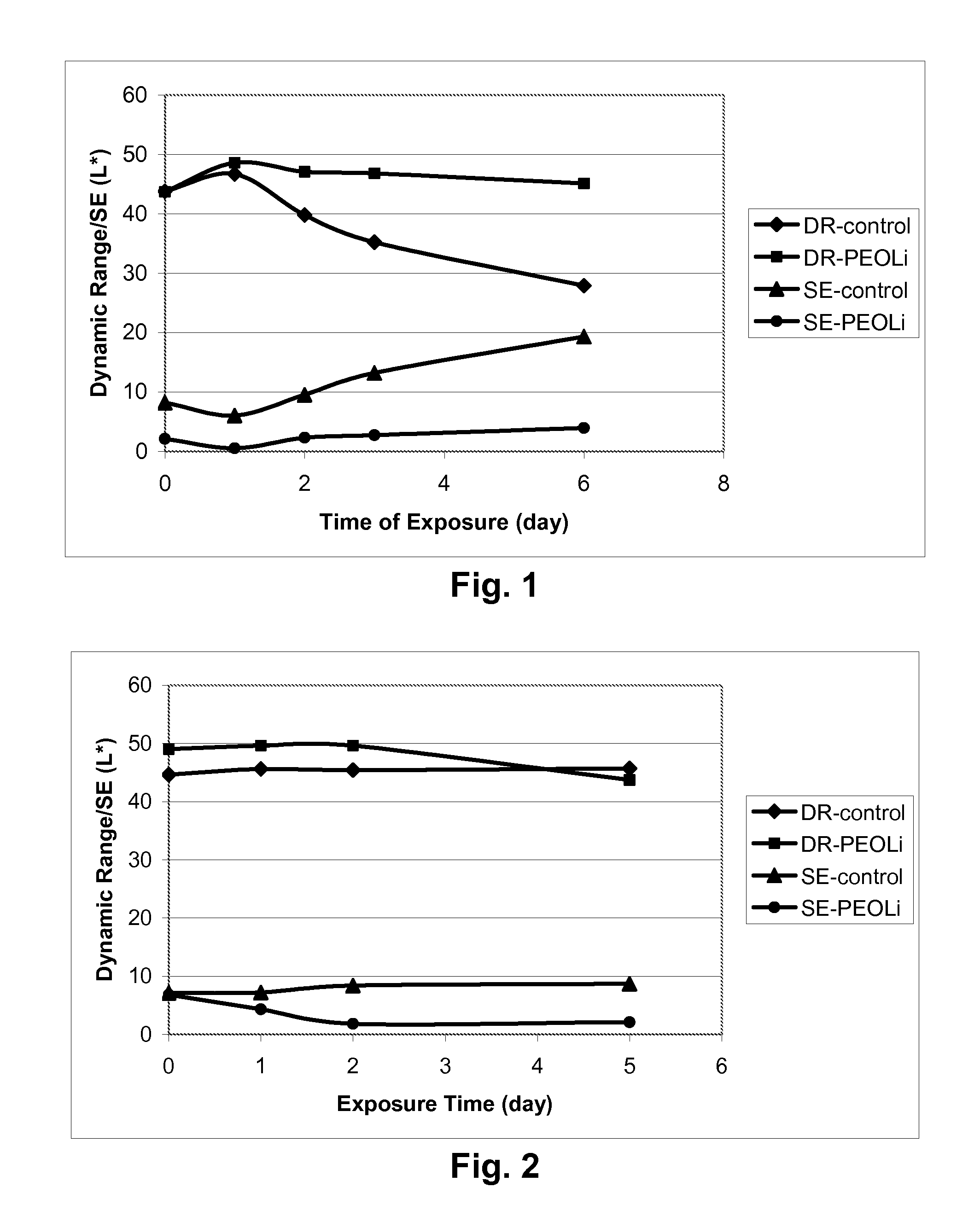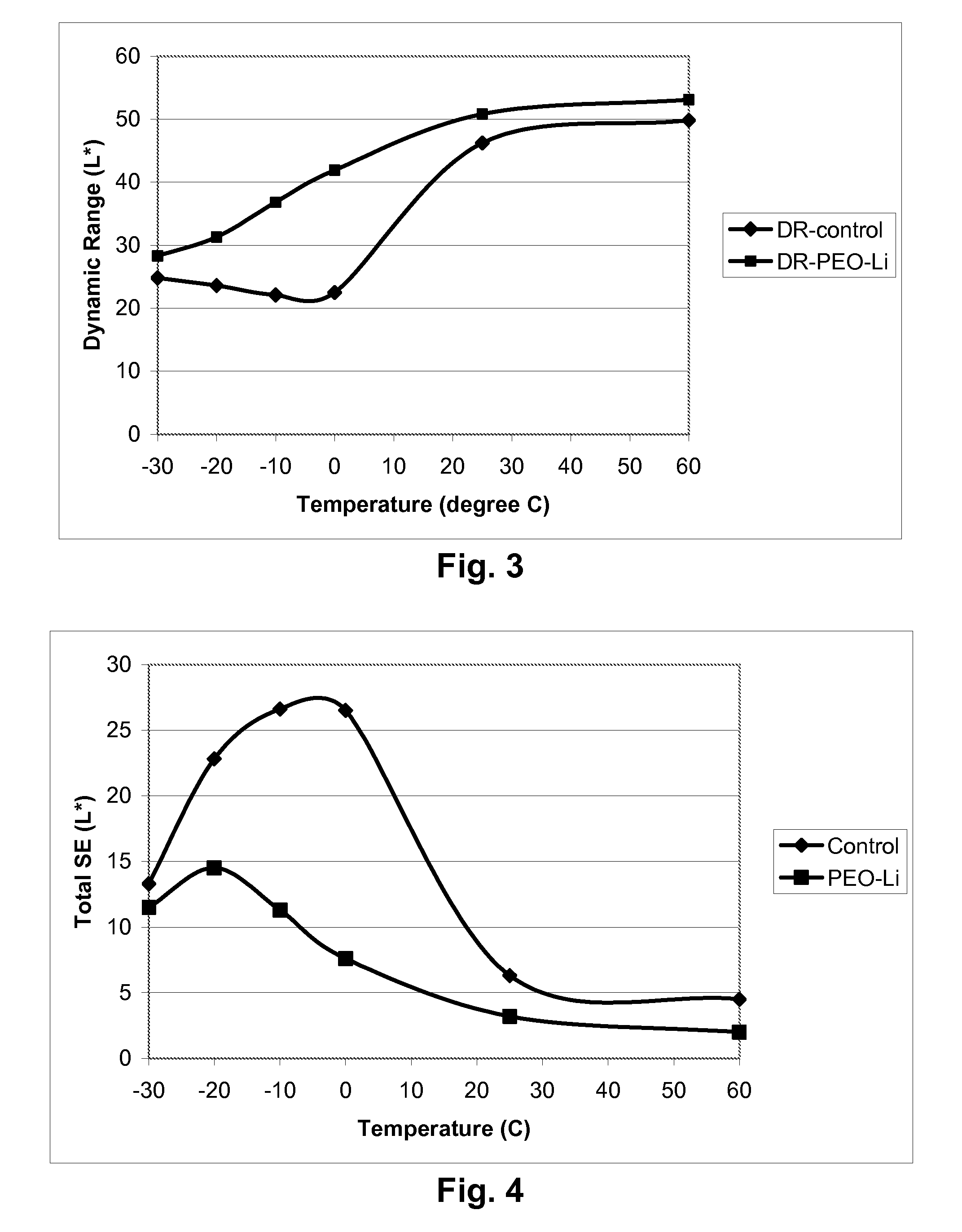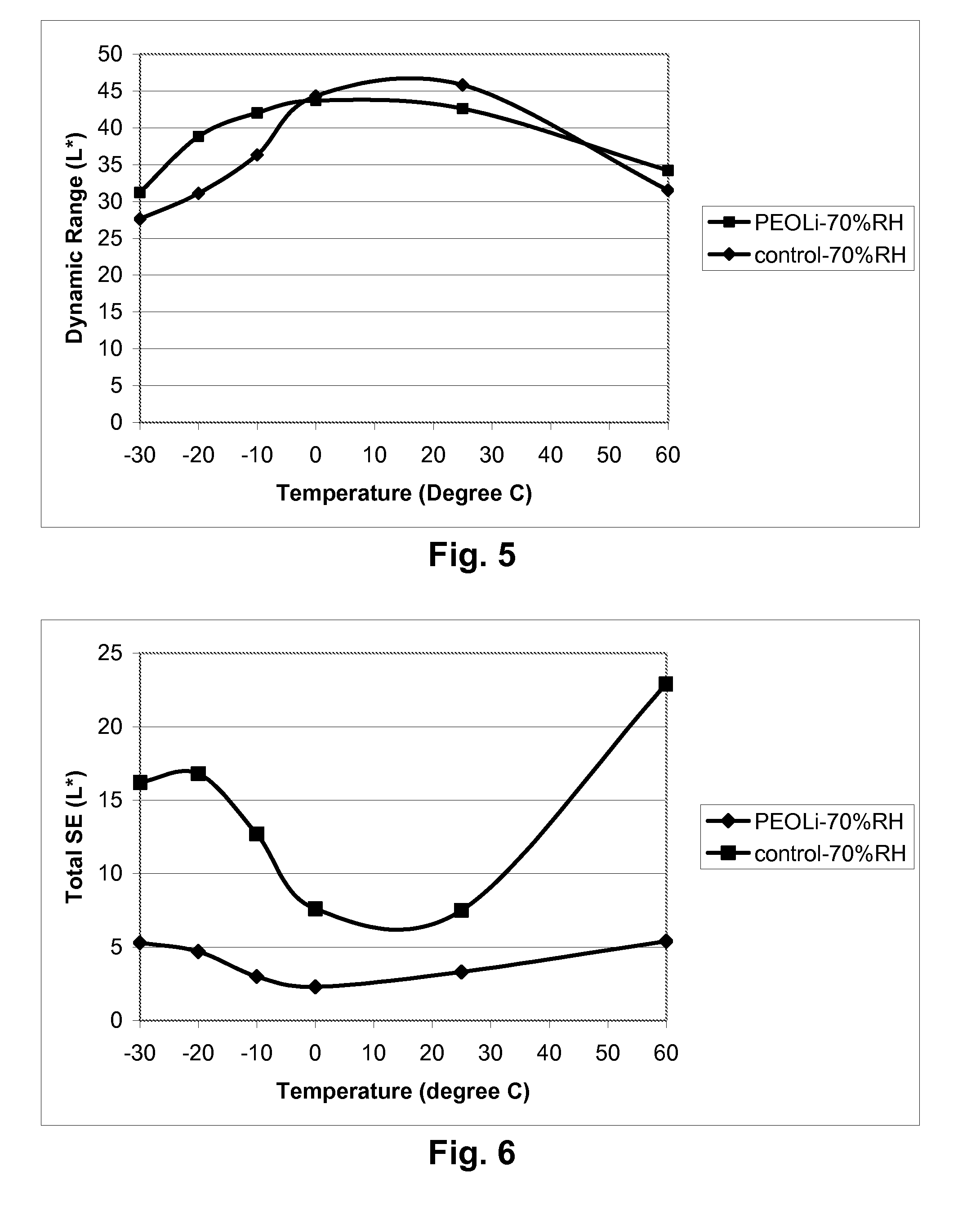Materials for use in electrophoretic displays
a technology of electrophoretic media and materials, applied in the field of electrophoretic media and displays, can solve the problems of inadequate service life of electrophoretic media, preventing widespread use, and gas-based electrophoretic media being susceptible to the same types of problems
- Summary
- Abstract
- Description
- Claims
- Application Information
AI Technical Summary
Problems solved by technology
Method used
Image
Examples
example 1
Control Polymer-Dispersed Electrophoretic Display
[0057]This Example illustrates the preparation of a control polymer-dispersed electrophoretic display (i.e., one lacking a polymeric barrier layer) by a process generally similar to that described in the aforementioned U.S. Pat. No. 7,079,305.
[0058]Gelatin (6.0 g, supplied by Dynagel, Inc., 10 Wentworth Avenue, Calumet City, Ill. 60409) was dissolved in deionized water (90 mL) maintained at 50° C. in a 500 mL water-jacketed reactor equipped with a mechanical overhead stirrer. The reactor was stirred at 100 rpm and an internal phase (90 g) comprising polymer-coated titania particles and polymer-coated copper chromite particles in a hydrocarbon fluid (this internal phase being substantially as described in the paragraph bridging columns 20 and 21 of the aforementioned U.S. Pat. No. 7,002,728) was added to the reactor. After the internal phase had become fully dispersed, poly(vinyl alcohol) (291 g of a 10.3 percent solution of Kuraray Mo...
example 2
Polymer-Dispersed Electrophoretic Display with Barrier Layer
[0060]This Example illustrates the preparation of a polymer-dispersed electrophoretic display of the present invention having a poly(ethylene oxide) (PEO) barrier layer by a process similar to that of Example 1.
[0061]Example 1 was repeated except that a PEO barrier layer was provided between the electrophoretic layer and the lamination adhesive layer. To provide this barrier layer, a PEO solution was prepared by dissolving PEO (7.8 g of a PEO from Aldrich, Mw about 300,000) in deionized water (92.2 mL) and coated over an electrophoretic layer formed as in Example 1 above using a bar coater with a wet gap set to 80 μm, resulting in a dried PEO layer approximately 7 μm thick. Experimental single pixel displays were then prepared as in Example 1 above.
example 3
Control Polymer-Dispersed Electrophoretic Display
[0062]This Example illustrates the preparation of a control polymer-dispersed electrophoretic display generally similar to that of Example 1 but using a different binder.
[0063]Gelatin (5.0 g, supplied by Dynagel, Inc.) was dissolved in deionized water (50 mL) maintained at 50° C. in a 500 mL water-jacketed reactor equipped with a mechanical overhead stirrer. The reactor was stirred at 100 rpm and the same internal phase (120 g) as in Example 1 was added to the reactor. After the internal phase had become fully dispersed, poly(vinylpyrrolidone) (8.0 g of a 20 percent solution, Mw about 1.3×106, from Aldrich) and poly(vinyl alcohol) (310 g of a 9.2 percent solution of Kuraray Mowiol 28-99) were added slowly to the reactor, which was maintained at 50° C. After approximately 15 minutes stirring, the jacket temperature of the reactor was lowered to 25° C., and thereafter stirring was continued for an additional 24 hours. After this time, g...
PUM
| Property | Measurement | Unit |
|---|---|---|
| diameter | aaaaa | aaaaa |
| thickness | aaaaa | aaaaa |
| thickness | aaaaa | aaaaa |
Abstract
Description
Claims
Application Information
 Login to View More
Login to View More - R&D
- Intellectual Property
- Life Sciences
- Materials
- Tech Scout
- Unparalleled Data Quality
- Higher Quality Content
- 60% Fewer Hallucinations
Browse by: Latest US Patents, China's latest patents, Technical Efficacy Thesaurus, Application Domain, Technology Topic, Popular Technical Reports.
© 2025 PatSnap. All rights reserved.Legal|Privacy policy|Modern Slavery Act Transparency Statement|Sitemap|About US| Contact US: help@patsnap.com



